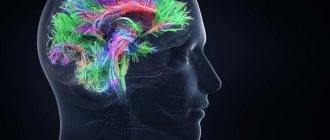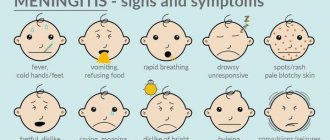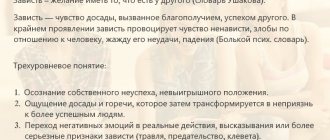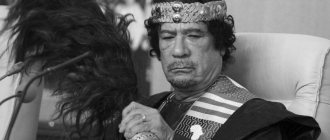In recent years, many publications have appeared on the Internet devoted to the problem of diagnosing and treating autism spectrum disorders. Because of this, many have the impression that such diseases were previously extremely rare, but this is far from the case. Research into this pathology began only in the 1980s (previously, autism was considered a form of mental retardation), and until now experts have not come to a consensus regarding the etiology, principles of diagnosis, correction and prevention of the disease. And often the detection of autism in adult men is a consequence of an incorrect diagnosis and insufficient examination in childhood. In addition, some forms of the disease (in particular, Asperger's syndrome) are rather a borderline state between autism and a normal mental state, and patients can lead a full life, work, and socialize. And while medical doctors offer corrective assistance to children suffering from autistic disorders, for autism in men a comprehensive neuropsychological examination is required to rule out organic brain damage and psychotherapy.
Causes of Autism Spectrum Disorders
It is believed that the disease is a consequence of a genetic defect. Congenital malformations of the central nervous system lead to disruption of neural connections in the left hemisphere of the brain, necessary for analyzing information. This causes certain changes in the psyche, behavior and intellectual abilities. Contrary to popular belief, autism does not always develop cognitive deficits. Rather, on the contrary, some people with a similar diagnosis show remarkable talent and abilities in certain branches of science, art, etc.
There is also no proven connection between the disease and vaccinations or any previous infections. It is believed that such prejudices are associated with the fact that the manifestation of symptoms of the disease often coincides with the beginning of immunization, visiting kindergarten or school, when the child gets sick much more often.
According to other theories, the disorder occurs under the influence of such factors:
- hypoxia of the placenta;
- intrauterine intoxication when a pregnant woman consumes alcohol, drugs, teratogenic drugs;
- viral or bacterial infections suffered by the expectant mother (rubella, influenza, toxoplasmosis, herpes, etc.);
- early delivery;
- complications during childbirth (asphyxia, premature rupture of amniotic fluid).
Important! Autistic disorders do not arise as a result of traumatic brain injuries, strokes, or any somatic or neurological diseases suffered in adulthood. Most likely, symptoms of autism in adult men are the result of undiagnosed or incorrectly diagnosed children.
When is it necessary to reduce stereotypy?
Stimming often interferes with a child's educational process and social adaptation. Some types of self-stimulation can be harmful both to the child himself and to others.
At the first manifestation of stereotypical movements, it is recommended to undergo a full examination, since they can be the result of certain medical problems: headaches or other discomforts in the body, which the patient is unable (due to his characteristics) to tell others about.
How does autistic disorder manifest in adults?
In the vast majority of cases, childhood autism is diagnosed before the age of 3 years. In such a situation, attention is paid to the lag in physical and mental development from peers, inadequate reaction to external stimuli, and lack of response to one’s own name. The child does not recognize parents or loved ones, and reacts aggressively to attempts to change the usual daily routine, rearrange things or toys. As you grow older (and with appropriate corrective work), the situation may improve, but pronounced signs of pathology persist for life. Often the patient cannot cope without outside help and is not able to live independently.
Later manifestation is characteristic of atypical autism and Asperger's syndrome. Children and adolescents with this form of the disease are practically no different from their peers. However, certain features can be noticed:
- lack of desire to communicate with anyone, desire to play together, spend time, including with parents and family members;
- isolation, unsociability;
- thoughtfulness: a person periodically immerses himself in himself, without reacting to what is happening, but as a rule, such episodes last no more than a few minutes;
- discomfort when the boundaries of personal space are violated: adult men suffering from autism avoid handshakes, hugs, often refuse joint holidays, corporate events, etc.;
- narrow range of interests: patients with a similar diagnosis usually do not accept team sports, rarely visit gyms and fitness clubs, and prefer to spend their free time alone.
In most cases with autistic disorders, speech skills develop much later , so in adulthood a person speaks more slowly, choosing his words carefully. Often the speech is quite correct, without jargon. But at the same time, there are no epithets or comparisons. Characterized by a lack of a sense of humor, a lack of understanding of jokes, sarcasm, and anecdotes.
They note a manic desire for order. All things, documents, and household items are always clearly in their place, and this applies to both the home and the workplace.
With autism, it is extremely difficult for men to build relationships with the opposite sex. On the one hand, not every woman is ready to put up with peculiarities of character and behavior; on the other hand, the patient himself does not seek to expand his social circle. In most cases, a person is able to live independently, solve everyday problems that arise, but often he needs help in some difficult life situations (for example, buying or renting a home, preparing any documents). In addition, it is also very difficult for him to cope with stress caused by a conflict with loved ones or colleagues, radical changes in life (moving, being fired), a change in his usual environment (the need to undergo treatment in a hospital, etc.).
Types of stereotypies in autism
In the course of numerous studies and observations, the following types of stereotypies were identified:
- visual - tracking fire or water, rapid blinking, movement of hands in front of the eyes;
- sound - covering the ears with hands, making non-speech sounds, grinding teeth;
- tactile – scratching, rubbing the skin with various objects or hands, scratching, washing movements of the hands;
- vestibular - rocking the whole body from side to side or back and forth;
- gustatory – licking objects or biting;
- olfactory – sniffing objects, showing interest in pleasant smells.
Cost of services
| CONSULTATIONS OF SPECIALISTS | |
| Initial consultation with a psychiatrist (60 min.) | 6,000 rub. |
| Repeated consultation | 5,000 rub. |
| Consultation with a psychiatrist-narcologist (60 min.) | 5,000 rub. |
| Consultation with a psychologist | 3,500 rub. |
| Consultation with Gromova E.V. (50 minutes) | 12,000 rub. |
| PSYCHOTHERAPY | |
| Psychotherapy (session) | 7,000 rub. |
| Psychotherapy (5 sessions) | 30,000 rub. |
| Psychotherapy (10 sessions) | 60,000 rub. |
| Group psychotherapy (3-7 people) | 3,500 rub. |
| Psychotherapy session with E.V. Gromova (50 minutes) | 12,000 rub. |
| TREATMENT IN A HOSPITAL | |
| Ward for 4 persons | 10,000 rub./day |
| Ward for 3 persons | 13,000 rub./day |
| Ward 1 bed VIP | 23,000 rub./day |
| Individual post | 5,000 rub. |
| PETE | 15,000 rub./day |
This list does not contain all prices for services provided by our clinic. The full price list can be found on the “Prices” , or by calling: 8(969)060-93-93. Initial consultation is FREE!
How to reduce stereotypies
There are several ways to reduce the occurrence of stimming:
- A complete medical examination will allow you to determine the presence of medical stimulants for the appearance of such behavioral deviations and eliminate them.
- Providing an emotional and sensory environment that is comfortable for the child.
- Stereotypes can also arise due to lack of attention or idleness; in this case, it is recommended to involve the child in sports, swimming or other physical activities. Neurocorrection is also useful in the fight against obsessive behavior.
- Stereotyped behavior appears - continue to talk to the child and try to redirect his attention, do not allow him to become completely immersed in his thoughts.
- Use stimming as a reward for short periods of time.
- Sometimes it helps to have adults join in with baby stimming. Repeat the movements after your child, he will be distracted and perform other movements.
In other words, if you want to overcome stimming, offer an appropriate alternative.
Correction of autism in adult men
Drug treatment does not change the course of the disorder, but helps relieve possible accompanying symptoms. Prescribing sedatives, nootropics, neuroprotectors allows you to cope with:
- emotional lability;
- sleep disorders;
- cognitive deficit, etc.
The basis of treatment is psychotherapy, and the method of psychological influence is always selected on an individual basis, since what “works” for one patient may not be suitable for another. Consultations with a correctional psychotherapist are aimed primarily at socializing the patient.
much more difficult to do in adulthood than in childhood. However, doctors at the Leto clinic carefully work through all communication problems and help a man cope with difficulties that arise when communicating with other people. It is very important to further develop speech and work skills. Any hobbies are encouraged, especially if a person communicates with other people while pursuing his hobbies.
Even when starting psychotherapy for autism in adult men, specialists at our clinic usually manage to achieve noticeable results. However, despite the positive effect, one course of correction is not enough. To prevent deterioration of the condition, regular psychotherapy and rehabilitation are necessary.
More information about the treatment of autism in both adults and children at the Leto mental health center can be found by calling 24/7 8(969)060-93-93 .
Autism - symptoms and treatment
Is it possible to recover from autism?
Autism is a disorder that cannot be completely cured, but with timely initiation of complex therapy, it is possible to reduce the severity of its symptoms.
Treatment in children
Speech therapy treatment. During therapy, special attention is paid to correctional and developmental classes with a speech therapist, a speech pathologist and a psychologist. They should be carried out by specialists with experience in interacting with such children, since working with autism has its own specifics: the need to adapt the child to new conditions, involve all analyzers (tactile, auditory, gustatory, visual, olfactory), involve the child in the lesson by motivation, practicing the pointing gesture [13]. A positive result is achieved only with regular classes involving the child’s entire family: parents, brothers and sisters.
Among modern approaches to correctional work, the following can be distinguished:
ABA therapy (applied behavior analysis) is a set of techniques aimed at correcting a child’s behavior and acquiring self-care and social skills. Using a reward system, a child with autism is taught missing everyday and communication skills. Delicious food, praise, and tokens are used as rewards. Each simple action is learned separately, then they are combined into a sequence. For example, at the beginning the child is given a simple task (for example, “raise your hand”), a hint is immediately given (the specialist raises the child’s hand), then the child is encouraged. After several such attempts, the child already performs the action without prompting, expecting a reward. Gradually, tasks become more complicated, given in random order, in different situations, by different people, family members to consolidate the skill. At some point, the child begins to independently understand and complete new tasks.
In the same way, playing skills, constructive activities, and learning are trained, and unwanted behavior is corrected. The effectiveness of applied behavior analysis has been confirmed by scientific research [20]. The earlier you start using the method (preferably from 3-4 years old), the more intense the classes are (at least 20-40 hours a week with a total duration of 1000 hours) and the more actively the method is included in the child’s daily life (its use by parents at home and on a walk, teachers at school, teachers in kindergarten), the more efficiently it will work.
The Denver model is based on ABA therapy methods - an integrated approach for children with ASD from 3 to 5 years old, teaching the child all the necessary skills for this age, which can subsequently significantly increase his adaptive abilities.
PECS (Picture Exchange Communication System) is an alternative communication system using picture cards. The cards depict objects or actions with which a child can turn to an adult to get what he wants. Training in this method is carried out using ABA therapy tactics. Although it does not directly teach spoken language, some children with autism in this program develop spontaneous speech.
TEACH (Treatment and Education for Autistic and related Communication handicapped Children ) is a program based on the idea of structured learning: dividing space into separate zones intended for a specific type of activity (work zones, recreation zone), planning pastimes according to visual schedules, system task presentations, visualization of task structure.
DIR (Developmental Individual differences Relationship-based) is a concept for providing comprehensive assistance to children with various developmental disorders, taking into account individual characteristics and based on building relationships between family members. One of the components of this program is the Floortime technique, which teaches parents to interact and develop an autistic child by including them in their play and gradually involving them in a shared “space.”
The emotional-level approach was developed by domestic psychologists (Lebedinskaya, Nikolskaya, Baenskaya, Liebling) and is widely used in Russia and the CIS countries. It is based on ideas about the levels of emotional regulation in the body that are disrupted in autism. This approach involves therapy through establishing emotional contact with the child. In the future, work is carried out to overcome fears and aggression, and focus is formed in activities.
Sensory integration is a method aimed at organizing sensations received from one’s own movements and the external world (tactile, muscular, vestibular). According to sensory integration theory, when the ability to perceive and process sensations from body movements and external influences is impaired, learning and behavior can be disrupted. Performing certain exercises improves the brain's processing of sensory stimuli, which leads to improved behavior and learning. This type of therapy is not used independently; it can be a supporting method within the framework of ABA therapy.
Drug therapy is usually prescribed during periods of exacerbation of the condition, taking into account the balance of benefit and risk, and is carried out under the supervision of a physician [19]. Drugs can reduce some types of behavioral problems: hyperactivity, tantrums, sleep disorders, anxiety, self-aggression. This can make it easier for the child to participate in family life, visit public places, and go to school. After achieving stable remission, the drug is gradually discontinued. Drug treatment is used in cases where other methods of therapy are not effective.
However, there are symptoms and problems that cannot be controlled with medications:
- failure to follow verbal instructions;
- problematic behavior with the aim of giving up certain activities;
- low learning rate;
- lack of speech and other communication problems;
- low social skills.
If there are concomitant diseases (for example, epilepsy), in addition to a psychiatrist, the child should be monitored by a neurologist and pediatrician.
Treatment for adults
ASD can be corrected in adulthood using cognitive behavioral psychotherapy. Specific treatments are tailored to the problems the person with ASD faces (such as social isolation or relationship problems). You may also be able to take prescription medications to reduce the anxiety and depression that can occur with ASD. Medicines are selected individually by a psychiatrist.
How to live with a child with autism
A child with ASD requires attention and care, so, as a rule, one of the parents has to resign; most often this decision is made by the mother. A clear distribution of roles for family members when caring for a child is important - this directly affects his quality of life. A family in which a child with ASD is growing up faces an important task: it is necessary to create an environment where not only the child with ASD, but also all family members will have development prospects. When a parent receives effective psychological help, this has a positive effect on the condition of the child with ASD, since the parent’s good health helps him better support the child [24].
Can autistic people have healthy children?
The manifestation of the disease depends on a combination of genetic factors and environmental influences, however, the risk of having children with ASD in parents with this disorder is much higher than the average in the population.
According to NIH (National Institutes of Health) research, ASD occurs in approximately 3-5% of children who have an aunt or uncle with the disorder. For comparison, in the general population, ASD is detected in 1.5% of children [27].










